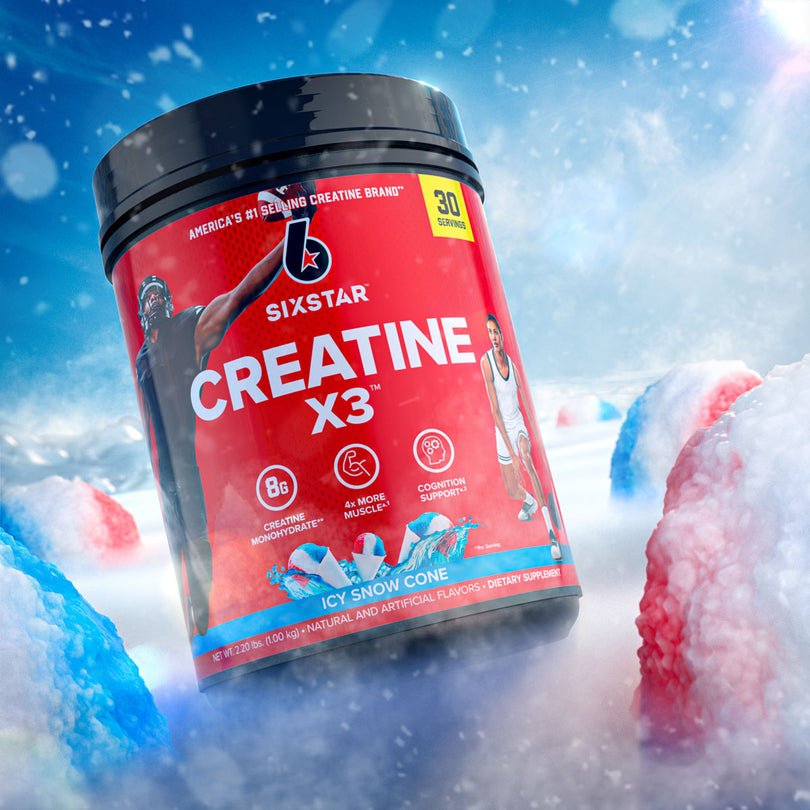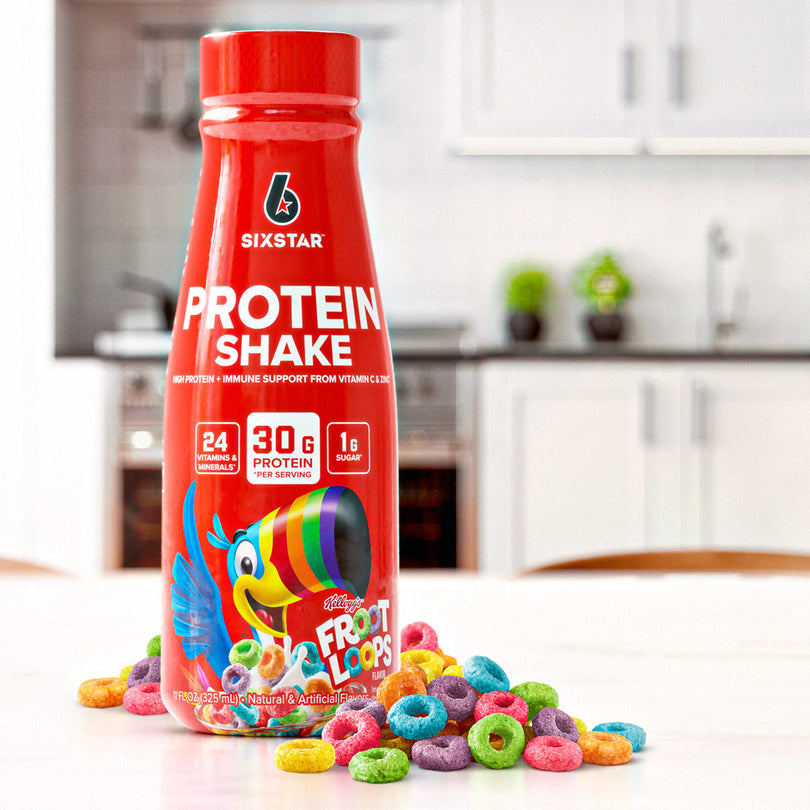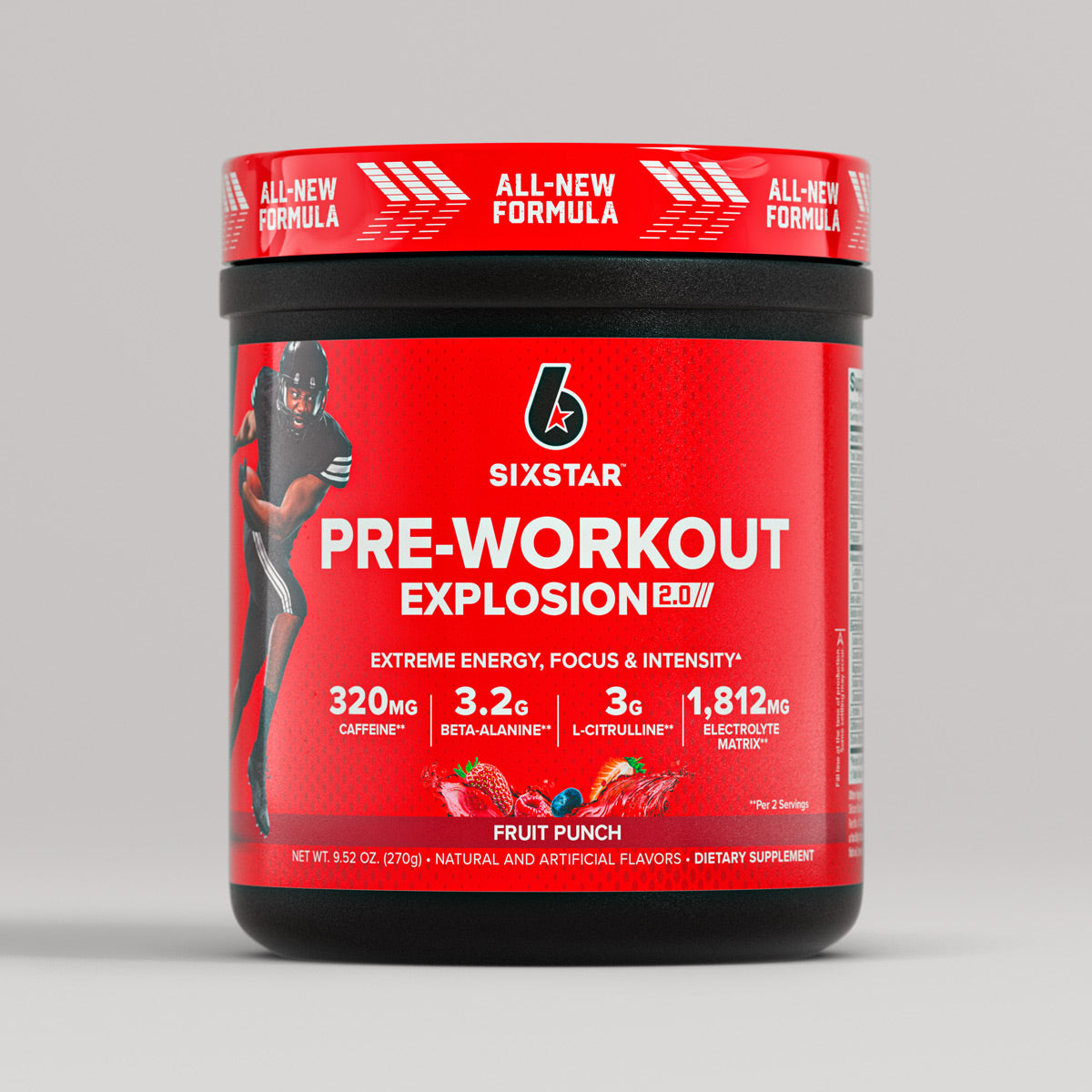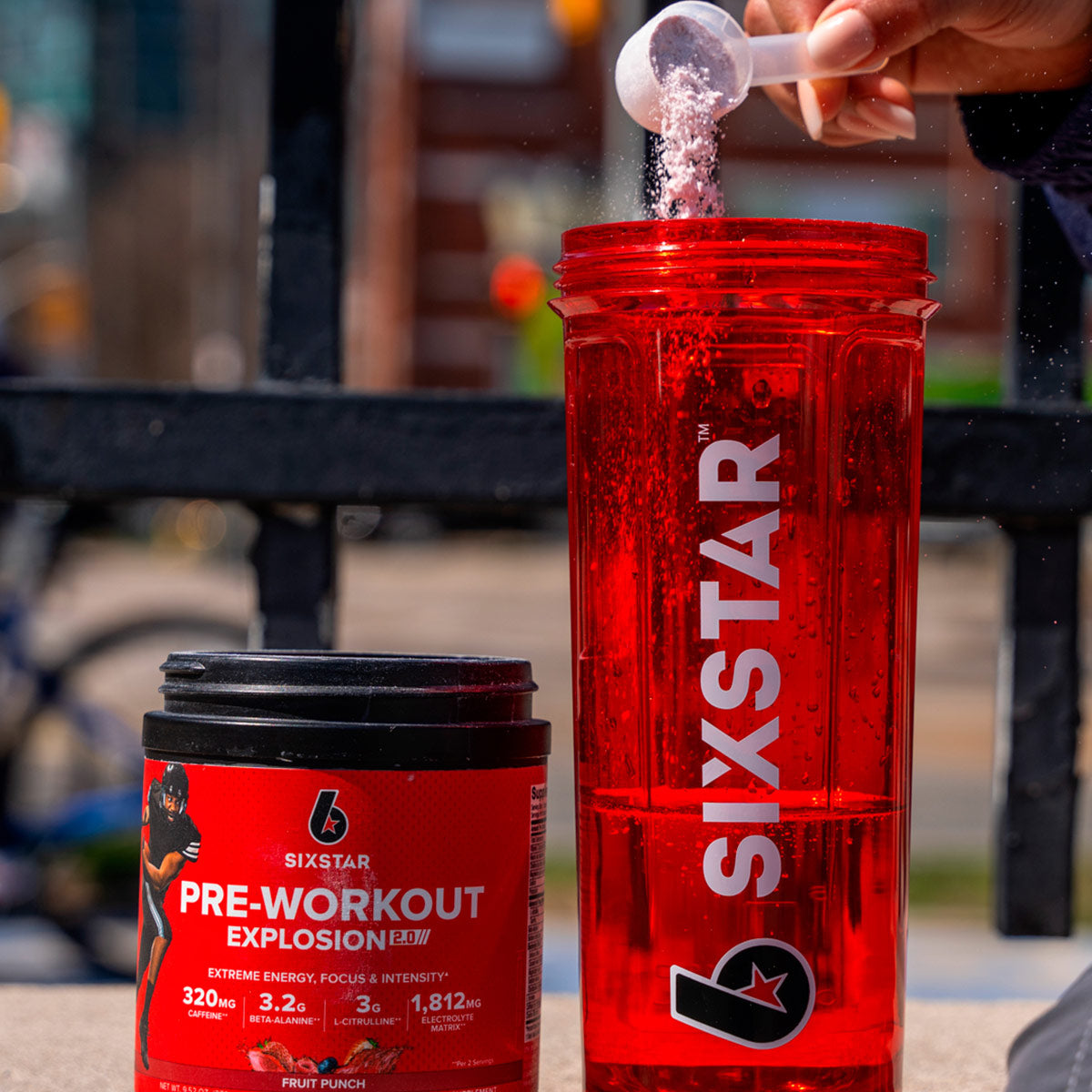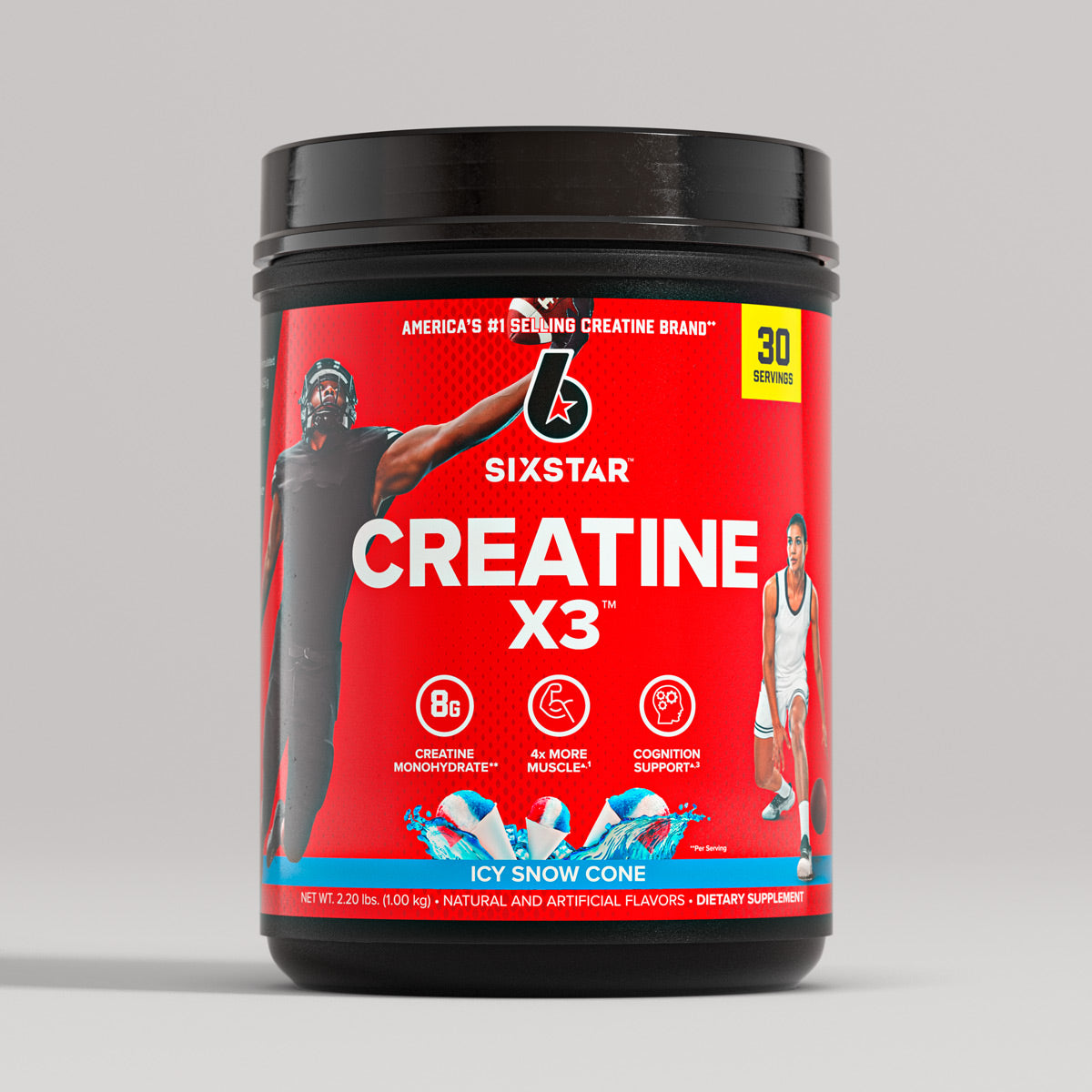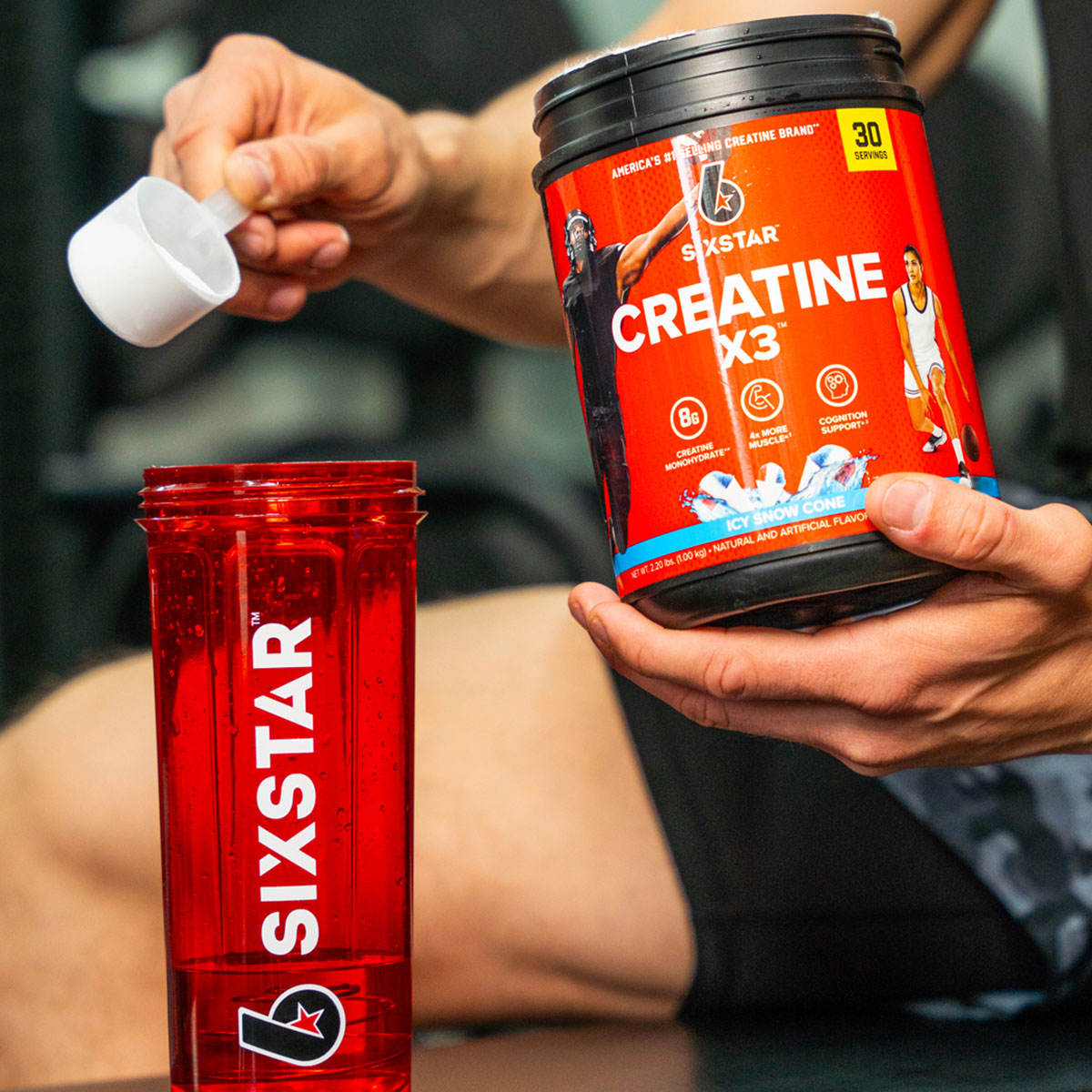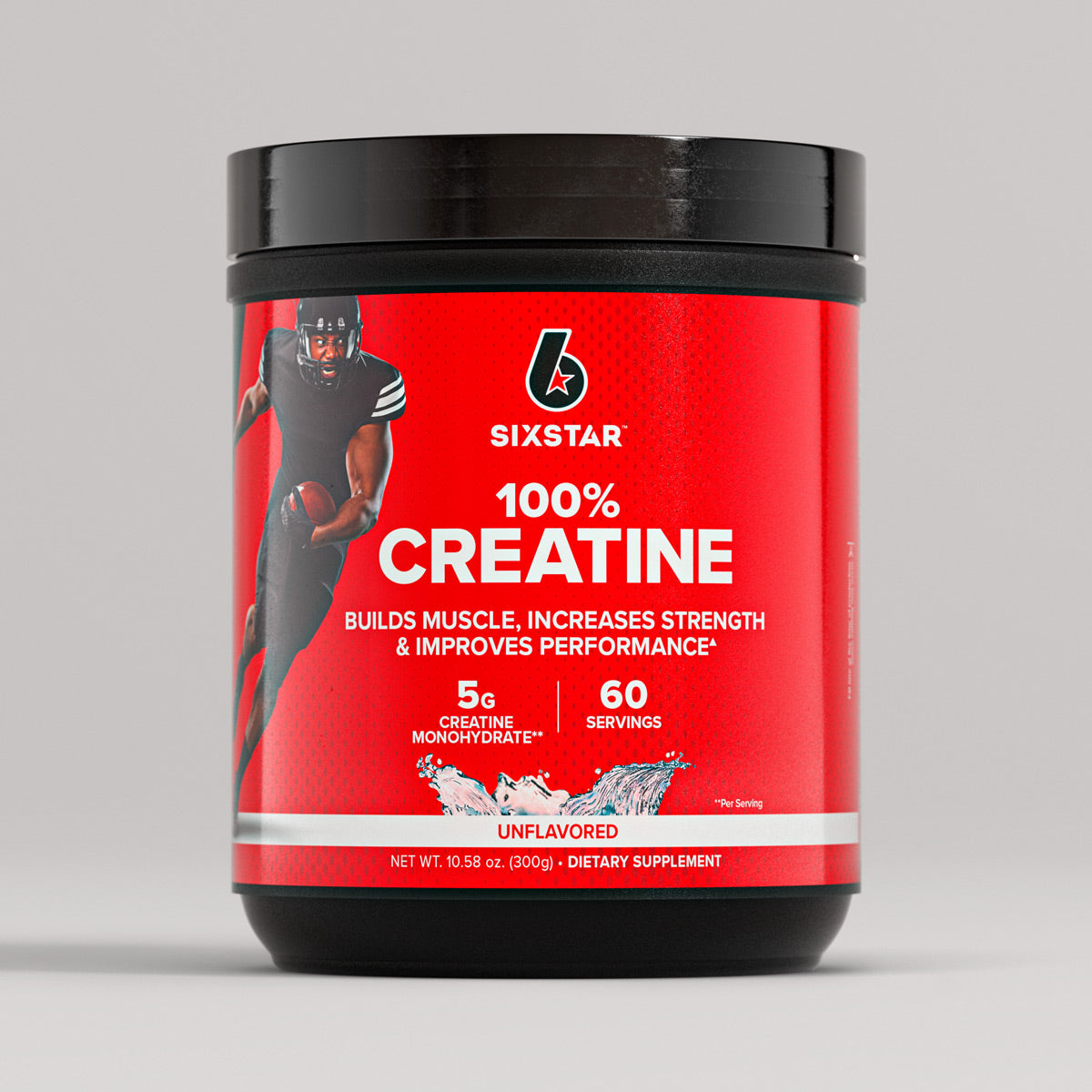Creatine is one of the most popular and well-researched supplements in the fitness world. It has been extensively studied – mostly for its ability to enhance athletic performance. On top of that, it can increase muscle mass and improve strength level.
Many athletes, bodybuilders, and fitness enthusiasts rely on creatine. They think of it as a staple supplement in their regimen. However, a heated debate has been circling around lately when it comes to using it, specifically – should you cycle creatine, or is it safe and effective to take it continuously?
There are so many different opinions on cycling creatine. Some believe it is necessary if you truly want to experience its effectiveness, while others argue that continuous supplementation may yield the best results.
In this article, we will explore what creatine is, how it functions, and whether there is any scientific merit if you decide to cycle it. By the end, you’ll know should you cycle creatine, the supplements impact on your performance, and the best approach for maximizing your results.
Table of contents
What is Creatine?
Creatine is a naturally occurring compound, usually found in small amounts in foods such as red meat and fish. The body is responsible for synthetizing it, primarily in the liver, kidneys, and pancreas, and does that from amino acids like arginine, glycine, and methionine. Once you produce or consume it, the body stores the creatine in the muscles. This is where it plays a vital role in energy production.
At its core, what creatine does is, it boosts the regeneration of adenosine triphosphate (ATP), which is the body’s primary energy source. When you do some high-intensity exercise, your body uses ATP as fast as it can, and creatine helps with adding more to it. It basically allows for prolonged and more powerful performance. This is why supplementing with creatine is something people popularly connect with increased strength, with more power, and with better muscle endurance.
There are different forms of creatine on the market, but the most studied and trusted type is creatine monohydrate. Other forms, such as creatine hydrochloride and ethyl ester, exist. The thing is, none have been shown to outperform monohydrate (specifically in scientific studies). Despite the market that shows all these advanced creatine supplements, monohydrate remains the gold standard – especially in terms of effectiveness and affordability.
Understanding Creatine Cycling
Cyclying creatine refers to a planned regimen where you take creatine for a certain period and then take a small break from it. This process often includes a few phases – the loading phase, maintenance, off phase.
A typical cycle involves taking a high dose for a few days (creatine loading phase), and you do the next phase of a lower daily dose (maintenance phase), Then the last phase is to stop with creatine for a certain period before you do the cycle again.
Why Do Some People Believe in Cycling Creatine?
The idea of should you cycle creatine comes from concerns about the potential downsides if you continue to use it for a longer period of time.
Here are the main reasons some people go for cycling:
Avoid Saturation - Some believe that after prolonged creatine use, the muscles reach a saturation point. This is where additional supplementation has little to no effect. They assume that if they take a break, this will allow the body to reset so that when creatine comes again in touch with the body, the effects are more pronounced.
Fear of Natural Production Suppression - There is a widespread misconception that supplementing with creatine might cause the body to stop producing its own. This assumption is similar to that of how anabolic steroid use suppresses natural testosterone production. This has led some people to take breaks from creatine, only to ensure their body continues producing it naturally.
Concerns About Kidney and Liver Strain - Some believe that continuous creatine use could put a strain on the kidneys and liver. This requires a cycling period to prevent potential harm. However, research has shown that creatine supplementation in healthy individuals does not negatively impact kidney or liver function.
The Reality of Creatine Cycling
Scientific research does not support the necessity of cycling creatine. Some studies have found that long-term creatine use (even up to five years) has no adverse effects on the body, and there is no evidence to suggest that cycling creatine improves performance or even enhances its benefits.
Additionally, the human body naturally resumes its baseline creatine production once supplementation is discontinued, meaning there is no risk of long-term suppression. While some people prefer cycling creatine based on personal preference, the current scientific world suggests it is not necessary to do this to maintain its effectiveness.
Do You Really Need to Cycle Creatine?
As you now know should you cycle creatine, there’s one more question to answer – do you really need to do it?
Research overwhelmingly supports the safety and effectiveness of continuous creatine supplementation. Multiple studies have concluded that long-term creatine use does not require cycling to maintain its benefits. Here’s why:
No Evidence of Reduced Effectiveness - The body does not become desensitized to creatine over time, meaning you can continue to experience its benefits without needing a break.
No Negative Health Impact - Long-term studies on creatine have found no harmful effects on kidney or liver function in healthy individuals.
No Suppression of Natural Creatine Production - Once supplementation stops, the body naturally resumes its normal creatine production without any long-term suppression.
Does the Body Stop Responding to Creatine Over Time?
Some people worry that the body will develop a tolerance to creatine, making it less effective over time. However, research suggests that muscle cells continue to respond to creatine supplementation regardless of how long you take it. This means there is no physiological need to cycle creatine to maintain its effects.
Is There a Creatine Tolerance Effect?
A common concern is that the body may build a tolerance to creatine. This means this will reduce its effectiveness over time. However, studies have shown that muscle creatine levels remain elevated as long as supplementation continues. The body does not develop a resistance to creatine. This means that its benefits remain consistent without the need to cycle.
Moreover, long-term supplementation has not been shown to cause kidney or liver damage in healthy people. Studies that follow participants who took creatine for extended periods found no adverse effects on kidney function - provided there were no pre-existing medical conditions.
The Best Way to Take Creatine
Creatine Loading Phase vs. No Loading
There are two primary ways to take creatine - loading and maintenance or a no-load approach.
Loading Phase Approach
When it comes to the best cycle for creatine, here’s an approach you can try:
Take 20g of creatine per day (divided into four 5g doses) for 5-7 days.
After loading, take 3-5g per day as a maintenance dose.
This method saturates the muscles quickly, leading to faster benefits.
No-Loading Approach
Here is what you need to do with this approach:
Take 3-5g of creatine daily without a loading phase.
Takes longer (around 3-4 weeks) to reach full muscle saturation but achieves the same end results.
While the creatine loading phase leads to quicker results, both methods are effective over time. If you prefer a gradual approach and do not take high doses upfront, the no-load method works just as well.
When to Take Creatine?
The best time to take creatine has been debated, but research suggests that post-workout supplementation may be slightly better for muscle retention and recovery. However, the most important factor is consistency - taking creatine at the same time each day ensures your muscles stay saturated.
What to Take Creatine With?
Creatine is best absorbed when taken with carbohydrates and protein. If you consume creatine alongside a meal or in a post-workout shake can enhance its uptake into muscle cells. This leads to greater benefits.
Other Myths and Misconceptions About Creatine
Despite creatine’s proven benefits, several myths continue to circulate about its safety and effectiveness. Let’s address some of the most common ones:
Creatine Causes Water Retention and Bloating – Some believe that creatine leads to excessive water retention, making users look puffy or bloated. While creatine does promote intracellular water retention, this actually enhances muscle fullness and does not cause the kind of bloating associated with excess sodium intake.
Creatine is Only for Bodybuilders – While bodybuilders benefit from creatine, it is also highly effective for endurance athletes, sprinters, and even older adults looking to preserve muscle mass and strength.
Creatine Leads to Hair Loss – Some claim that creatine increases dihydrotestosterone (DHT) levels, leading to hair loss. However, there is no solid scientific evidence linking creatine to male pattern baldness.
Creatine is Harmful to Teenagers – Many believe teenagers should avoid creatine supplementation. In reality, creatine is safe for teens engaged in sports or strength training, as long as it is used responsibly and under proper guidance.
Creatine Works Instantly – Some users expect immediate results from creatine, but its benefits accumulate over time. It typically takes a few weeks of consistent use to notice significant improvements in performance and muscle gains.
Creatine Causes Dehydration and Muscle Cramps - One of the most persistent myths about creatine is that it leads to dehydration and increases the risk of muscle cramps. This belief likely stems from the fact that creatine causes muscle cells to retain more water, leading people to assume it pulls water away from other areas of the body. However, research has consistently shown that creatine does not increase dehydration risk - in fact, it may help with hydration by improving fluid retention in muscles. Studies on athletes have also found no link between creatine use and a higher incidence of cramps. On the contrary, some evidence suggests that creatine could actually reduce the risk of cramping and improve heat tolerance during exercise.
The Verdict – Should You Cycle Creatine?
After reviewing the science, it is clear that cycling creatine is not necessary for most people. The myth that you should cycle creatine stems from outdated beliefs and misunderstandings about the way creatine functions in the body. Research consistently shows that creatine remains effective with continuous use and does not require cycling to maintain its benefits.
For those who experience bloating or minor side effects, if you experience it with different dosing strategies you can always take a brief break. This can always be an option. However, for most users, a consistent daily intake of 3-5 grams is the best cycle for creatine supplementation.
Now that you have the facts, are you ready to incorporate creatine into your routine with confidence? If so, focus on consistency, proper dosage, and a solid training program for the best results.
If you experience mild bloating or digestive discomfort, you might want to experiment with cycling – just to see if it helps. However, for most people, the best approach is to focus on consistent intake. Please, try to avoid to stop and then start again.
Creatine remains one of the most effective, well-researched, and safest supplements available. Whether you choose to follow a creatine loading phase, maintain the best cycle for creatine, or simply take it daily without cycling, the key is to stay consistent. Also, make sure to pair it with proper training and nutrition. If you want the best performance boost, there's no reason to overcomplicate things - just take your daily dose and reap the benefits!
So, should you cycle creatine? The evidence overwhelmingly suggests that cycling is unnecessary for most individuals. Continuous supplementation is both safe and effective, with no long-term negative effects on muscle function, natural creatine production, or organ health.

